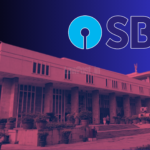The Supreme Court of India on November 19 proposed utilizing the e-prison portal to identify prisoners who remain in jail despite being granted bail, often due to their inability to furnish sureties. The bench comprising Justices Abhay S. Oka and A.G. Masih was hearing a suo moto case titled In Re Policy Strategy for Grant of Bail, which focuses on ensuring the timely release of such prisoners.
Justice Oka emphasized the importance of addressing this issue, stating, “We would like to know if bails are granted and how the e-prison portal could be helpful to trace out the cases where bail is granted but not availed. Either because they are poor or unable to furnish surety. Please look into it. We will expand it.”
The e-prison portal, developed by the National Informatics Centre (NIC) under the Ministry of Home Affairs, links 1,318 prisons across India and manages records of inmates from admission to release. Advocate Devansh A. Mohta, serving as amicus curiae, highlighted key gaps in the system and recommended improvements, including ensuring consistent use of Pre-Trial Numbers (PTNs) across states.
Issues with PTNs
Mohta noted discrepancies in the use of PTNs, which serve as case identifiers until charges are framed. He pointed out that while thousands of PTNs are generated in states, they are often unavailable to jail authorities or courts. “PTN and FIR would form a part of all communication between Courts and prisons,” Mohta suggested, urging the court to direct trial courts to include PTN and FIR details on custody warrants.
Justice Oka queried whether all states follow the practice of assigning PTNs. Mohta explained that PTN generation is inconsistent, with certain states lagging behind.
Improving Data Integration
Mohta proposed attaching information sheets to judgments and orders, including details like PTNs, Case Number Records (CNRs), and Prisoner IDs, to streamline data sharing between courts and prisons. He remarked, “These forms are different for different States. Once exercise is taken to review these forms, bear in mind that this information is required by other agencies also.”
The court also discussed tracking older cases without CNRs, especially those from before the digital system was implemented. Mohta highlighted that NIC could assist in generating CNRs for such cases if provided with a list from jail authorities.
Expanding E-Prison’s Scope
The bench explored ways to use the e-prison portal to address the issue of prisoners who cannot avail bail due to financial constraints. Senior Advocate Liz Mathew, also an amicus curiae, informed the court that while the matter had been raised previously, no follow-up actions were taken.
Justice Oka noted, “Because this has some connection with this subject also, the information available on the module can be used to find out cases where people have not availed of bail.”
The court will continue hearing the matter to examine how the e-prison portal can address these concerns.








